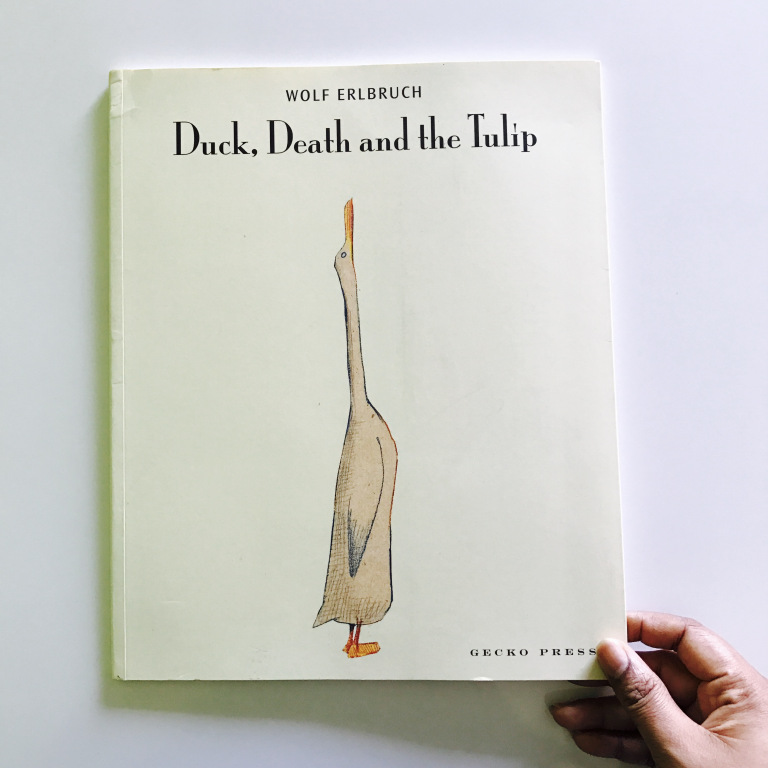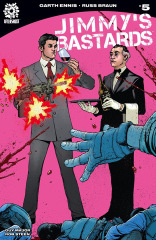By Leslie Lindsay
Lush, descriptive, wholly original psychological mystery in which one woman’s desires and abilities are put to the test.
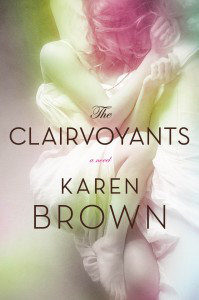 THE CLAIRVOYANTS is the second novel of Karen Brown (her first, THE LONGINGS OF WAYWARD GIRLS came out in 2013. Be sure to check out my interview with her here.
THE CLAIRVOYANTS is the second novel of Karen Brown (her first, THE LONGINGS OF WAYWARD GIRLS came out in 2013. Be sure to check out my interview with her here.
Karen’s prose is complex, vivid, and poetic. THE CLAIRVOYANTS is a hot, roiling simmer encased with erotic undertones, complex layers, a highly Gothic vibe that will have you wrapped in a hypnotic dream-state questioning your own reality.
Martha Mary and her slightly unstable younger sister, Del (Delores) claim to see ghosts. They are the charlatans of their small coastal town, offering seances and readings of the dead in exchange for a few bucks to buy lip gloss and drug-store flip-flops.
But maybe she *can* see ghosts after all?
Martha Mary leaves that coastal town and settles in Ithaca, New York in attempt to be a bit more ‘grounded,’ to attend college. There she falls in love with photographer/professor William Bell and together, along with her sister and other friends try to piece out the mystery of a missing, presumed dead girl, Mary Rae.
But dark, twisty things happen. More deaths. More ghosts. More mystery and intrigue. THE CLAIRVOYANTS is one of those books that will linger long after you’ve closed the cover for the last time.
Please join me in welcoming Karen Brown back to the blog couch.
Leslie Lindsay: Karen, it’s been a few years! It was 2013 when we chatted last—about THE LONGINGS OF WAYWARD GIRLS, your debut novel. I can only imagine you’ve been busy writing and teaching. Can you fill us in?
Karen Brown: I wish I could say that I’ve done some world traveling, but you’re pretty much spot on: Since we last chatted I’ve been mostly teaching and writing. I teach at the University of South Florida—my alma mater, where I first decided to become a writer, and where I produced my first short stories. Each semester I teach three sections of the same fiction writing courses I took myself years ago. Being a teacher means that each semester I am dropped into the fictional worlds of my students while trying to maintain the fictional world in my own work. Since LONGINGS appeared I’ve revised two novels, and have begun work on a new one—still tentative and very incomplete. The revisions can be just as time-consuming as starting from scratch—every small change can present entirely new plot directions. For me, revising is very close to drafting—I am always open to making big changes, and each version—for THE CLAIRVOYANTS it was twelve—takes the story further away from the original.
L.L.: I’m always, always intrigued about what sparks a writer into action on a particular title. I have to know, what was it for THE CLAIRVOYANTS?
Karen Brown: THE CLAIRVOYANTS started as a short story, “Galatea,” published first in Crazyhorse, and reprinted in BEST AMERICAN SHORT STORIES. As I expanded the story into a novel it became three sections—one set in Ithaca, NY, one in Florida, and one in the Caribbean. Martha Mary was the main character in each section, and the sections represented three different time periods of her life. The book was very long and convoluted, and after getting some initial reads I decided to simply focus on the Ithaca section. There are aspects of the other sections that I held on to and worked into the Ithaca story—Owen, Martha’s nephew and Anne, with her glioblastoma. Even the yachties in the Caribbean get to play a small role in the new version. The novel began as a story of a young woman with a troubled past who is seeking love. The addition of the ghosts and the spiritualist camp came about after I reconnected with a childhood friend whose parents bought a house in Pine Grove, a small spiritualist community in Niantic, CT. I was intrigued with the spiritualists and the mediums, and I wanted to add this component to the novel. Martha Mary is named after her great aunt, a nun, who dies in a car accident, and the themes of doubt and belief play into her sighting of Auntie Sister as a ghost when she is a child. In Ithaca, it seemed natural to give her a ghost to draw her into the ongoing mystery.
L.L.: One observation I made while reading THE CLAIRVOYANTS is that it could very well be any time period. The names of your characters: Martha Mary. Anne. Randy. Del. William. Mary Rae. Geoff. Well, they all seem kind of Nancy Drew-ish. Yet, they have cell phones, so it’s not exactly a period piece. But it could have been. Was this intentional on your part?
Karen Brown: I lived in an area similar to that of the novel for a year while I attended graduate school—a small, rural town thirty minutes from the closest movie theater, mall, and Pizza Hut. The drive in to the university was on a road that cut through a vast, open area of fields, the roadside dotted with occasional small businesses—a place that sold garden statuary, a bridal shop. Little kids wore blaze orange caps when they played outside and the big thing for girls was baton lessons. Guys drove muscle cars or trucks, and the professors lived in farmhouses down long wooded lanes. Isolated settings tend to create a sense of timelessness, and I wanted to capture that feeling. I like old-fashioned names (and I love Nancy  Drew), and perhaps subconsciously the names seemed to fit the setting. The novel focuses on a quirky group from a small, isolated town that gathers around an artist—Anne. Though they aren’t off the grid, the traditions they follow—the New Year’s Eve hunt, the recipes from old cookbooks, the games of Bridge, the Aaron Copland music—seem things borrowed from another time and recast as part of their small community. The addition of cell phones was practical—I needed the story to be set in a time long enough after the asylums were closed down—most in the 1970s—to have the one in the novel deteriorate.
Drew), and perhaps subconsciously the names seemed to fit the setting. The novel focuses on a quirky group from a small, isolated town that gathers around an artist—Anne. Though they aren’t off the grid, the traditions they follow—the New Year’s Eve hunt, the recipes from old cookbooks, the games of Bridge, the Aaron Copland music—seem things borrowed from another time and recast as part of their small community. The addition of cell phones was practical—I needed the story to be set in a time long enough after the asylums were closed down—most in the 1970s—to have the one in the novel deteriorate.
L.L.: I have to say, I loved the old, abandoned places that creep into the narrative. There are at least two, though there could be more, depending on your read. Are these real places, what was your inspiration for them? Having been a former psychiatric R.N., I’m especially taken with the abandoned asylum.
Karen Brown: I became interested in artists whose work focused on abandoned places, particularly abandoned asylums. Shaun O’Boyle’s asylum images, particularly those of Northampton and Buffalo State hospitals, formed the basis for the asylum in the novel. I was drawn to the colors in his images, and the way he made the deterioration of the buildings seem so beautiful. Many of the details of the asylum in the novel are from O’Boyle’s images. The area in central New York state where the novel is set is filled with abandoned houses and trailers, but for the
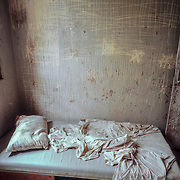

abandoned cottage in the woods, I relied on a fellow student in my MFA program years ago, who told us about hiking in woods in the Ithaca area and discovering an abandoned cottage with dishes still on the table, as if the people had just risen from their places and left. Her description stuck with me.
L.L.: There are definitely some twisty-turny moments in THE CLAIRVOYANTS. Are you a pantser or a plotter? What’s your writing space like?
Karen Brown: I almost always start with a setting, and then decide what sort of people I might put there. Once the characters are established, I like to live in the world a bit with them and see what kind of trouble they can get into—mostly creating scenes, which I do even when I am not writing. I sit down in the morning to work for as long as I have time. On teaching days that is usually until noon, but on other days, or like now, in the summer, I’ll go as long as I can stand to sit still.
I don’t have a desk—I write sitting on a couch in the middle of the house. At any given time there is passing traffic on the four-lane boulevard, my husband on the phone in his office, my son asking would I please, please make some eggs for breakfast. Today, a cat we’ve taken in is in heat, a man is sanding our old windows outside in preparation for painting, my son is watching a movie in an adjoining room, just returned from morning class. I’ve always written in the midst of a kind of chaos, but I must admit I prefer a quiet space—early mornings before the late-sleepers in the house awaken are my best days.
L.L.: You have two collections of short stories. Of course the novel and short story are two totally different forms. In your opinion, what are the similarities, the differences?
Karen Brown: Most of my short stories contain one novel, at least. When I write a story, I know far more than I ever reveal about the setting, the characters, and the events that have shaped the conflict they find themselves struggling with. There are backstories and histories and scenes in the characters’ lives that simply aren’t needed to build up to the pivotal moment a story depends on. The art of the short story is choosing what to leave out and deciding which moment will be the one to highlight as most revelatory. Novels do the same thing, though they use a handful of moments that necessarily rely on each other to accomplish the same feat—give a reader a world inhabited by people whose thoughts and actions reveal something vital about our own lives.
L.L.: In a related question, a form I’m super-curious about is a linked novel, a novel in short stories. Can you educate us on that, too?
Karen Brown: Some of my favorite books are novels in stories, or linked short stories. Sherwood Anderson’s WINESBURG, OHIO, for example, or more contemporary books like Jennifer Egan’s A VISIT FROM THE GOON SQUAD or Elizabeth Strout’s OLIVE KITTERIDGE. I’ve always been attracted to the genre, and wrote my PhD dissertation as a novel in stories. From a writer’s perspective, this genre provides the best of both worlds. You get to use the short story to capture a particular moment in a character’s life, yet by stringing stories together—ones that explore other characters’ perspectives, or the same character at another point in her life—you can reveal the hidden parts of the larger story that must necessarily, by the nature of the short story form itself, be left out. These leaps between characters through time present a sense of a larger picture—that of a community or a family or a set of characters whose relationships alter and change through time. The stories in these books are linked by character or place—or both. One of my favorites, OUR KIND, by Kate Walbert, uses a communal narrator. Often, the setting becomes a character in the story, as in Rebecca Barry’s excellent LATER, AT THE BAR. Just talking about the form makes me want to write another one.
L.L.: What was the last thing you Googled? It doesn’t have to be literary.
 Karen Brown: I’m working on a novel set in Tampa. When I first moved here in the early 80s, I bartended in a rock club, and I remember a customer talking about “Drew Park girls,” the classification clearly derogatory. The club was located on the edge of Drew Park, whose boundaries included two busy thoroughfares and Tampa International Airport. I was in the middle of a scene and wondered what I might find out about Drew Park if I looked it up: “The core of Drew Park is occupied by light industry, adult entertainment establishments, and several homes, due to its mixed-use zoning.” The area has been the focus of police raids for prostitution, operating without a license, and the illegal selling of alcohol. So, if you actually grew up in Drew Park, it might be in a house across the street from the Pink Pony Showgirls, or Buddies Adult Video, or Redline Express Couriers. Those poor Drew Park girls couldn’t live down their reputation if they tried.
Karen Brown: I’m working on a novel set in Tampa. When I first moved here in the early 80s, I bartended in a rock club, and I remember a customer talking about “Drew Park girls,” the classification clearly derogatory. The club was located on the edge of Drew Park, whose boundaries included two busy thoroughfares and Tampa International Airport. I was in the middle of a scene and wondered what I might find out about Drew Park if I looked it up: “The core of Drew Park is occupied by light industry, adult entertainment establishments, and several homes, due to its mixed-use zoning.” The area has been the focus of police raids for prostitution, operating without a license, and the illegal selling of alcohol. So, if you actually grew up in Drew Park, it might be in a house across the street from the Pink Pony Showgirls, or Buddies Adult Video, or Redline Express Couriers. Those poor Drew Park girls couldn’t live down their reputation if they tried.
L.L.: What should I have asked but may have forgotten?
Karen Brown: Last time, you asked me what I was reading, and since I’m always reading, I’m always eager to share the books that are intriguing me now. I just started Edan Lepucki’s WOMAN NO.17. I’m enthralled with California and noir, and this book brings all of that to life through the darkly funny voice of its narrators. I’m also reading Jan Marsh’s CHRISTINA ROSSETTI: A WRITER’S LIFE—my work-in-progress deals with an artistic sister and brother and their correspondence, and well, the Rossetti’s! For my upcoming classes I’m checking out Benjamin Percy’s THRILL ME: ESSAYS ON FICTION. Students are in love with genre, and I want them to write what they love, but write it well.
L.L.: Karen, it was a pleasure! Thanks so much for popping over.
Karen Brown: Thanks so much for having me, Leslie!
For more information, to connect with Karen via social media, or to purchase a copy of THE CLAIRVOYANTS, please see:
- Karen’s website
- Twitter: @henryholt
- Twitter: @karenbrownbooks
- Karen Brown shares insights into her 1924 Florida home, earlier on this blog
- Amazon
- Barnes & Noble
- BAM
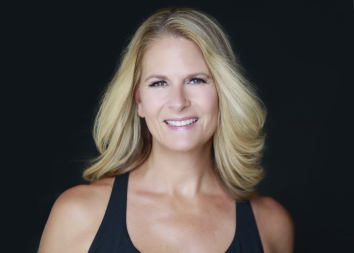 ABOUT THE AUTHOR: Karen Brown was born in Connecticut. She is the author of a novel, The Longings of Wayward Girls (July 2013), and two short story collections, Pins & Needles (July 2013) and Little Sinners and Other Stories, winner of the Prairie Schooner Book Prize, and named a Best Book of 2012 by Publishers Weekly. Her work has been featured in The PEN/O. Henry Prize Stories, Best American Short Stories, The New York Times, and Good Housekeeping,and in many literary journals. She teaches creative writing and literature at the University of South Florida.
ABOUT THE AUTHOR: Karen Brown was born in Connecticut. She is the author of a novel, The Longings of Wayward Girls (July 2013), and two short story collections, Pins & Needles (July 2013) and Little Sinners and Other Stories, winner of the Prairie Schooner Book Prize, and named a Best Book of 2012 by Publishers Weekly. Her work has been featured in The PEN/O. Henry Prize Stories, Best American Short Stories, The New York Times, and Good Housekeeping,and in many literary journals. She teaches creative writing and literature at the University of South Florida.

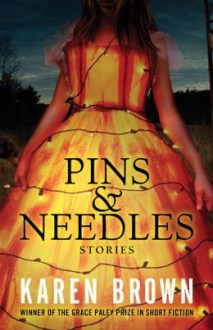
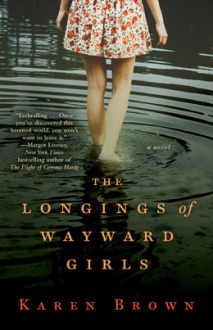
You can connect with me, Leslie Lindsay, through these various social media sites:
- GoodReads
- Facebook: LeslieLindsayWriter
- Twitter: @LeslieLindsay1

- Email:[email protected]
LOVE IT? SHARE IT!
[Cover image retrieved from author’s website, as well as other covers of previous works. Author image courtesy of Henry Holt and used with permission. Image from Westfield, NY retrieved from onlyinyourstate.com, images of interior abandoned asylum retrieved from Shaun O’Boyle’s website, woman on laptop/couch retrieved from shutterstock, reading in field from rebloggy.com, all on 5.23.17]
Share this:



